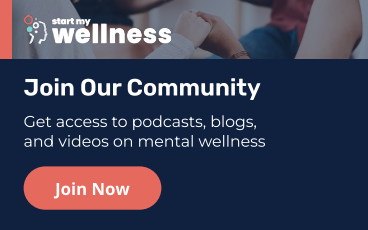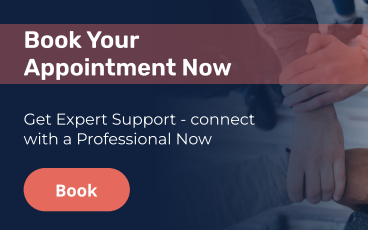All people experience emotions; it allows us to enjoy life. Emotions vary depending on the situation: positive emotions have a positive impact on our mental state and negative emotions can severely impact our mental and physical well-being. Often, problems can occur in the family, and people may not understand how to behave appropriately. In many families, there is a family enmeshment that exceeds normal boundaries. It has adverse effects on every family member. Parents often shift their responsibility to children and children to parents.
The family is struggling and is unable to function normally. Relationships in such families are often unhealthy. The enmeshed family has a peculiar meaning of improperly constructed boundaries. Sometimes, siblings may shift their responsibilities to each other. Usually, in a typical family, parents are the authority. However, in a dysfunctional family, there is almost no healthy connection.
Enmeshed Family Definition: Exploring the Core Concept
An enmeshed family is a dysfunctional family dynamic where members lack personal boundaries, resulting in excessive emotional dependence, oversensitivity to each other’s needs, and loss of individual autonomy.
It is essential for everyone to understand what an enmeshed family is. To build relationships and a family further, a family should be well-balanced. It is a system of several people who have mutual respect for each other. Often, an enmeshed family means blurred boundaries between each other.
People can be socially dependent and dependent on each other. In such a family, healthy relationships are almost impossible. To solve any problems and questions, you can contact StartMyWellness. You will be provided with the necessary assistance and help to solve any issue in psychological health.
- Enmeshment in families is often accompanied by an unhealthy assessment of each other. People do not understand what closeness and autonomy from each other means. Emotional ties are frequently too strong or broken. A person cannot be an individual and not depend on others. Decision-making involves another family member. This typically manifests as excessive attachment between parents and children. Parents may shift their social responsibility onto their children.
- The enmeshed family is difficult for people from healthy families to comprehend. Often, violation of boundaries between family members causes emotional or psychological consequences. All people in the family are in too close a relationship. They may experience increased anxiety, stress, or guilt. This guilt and anxiety are related to the imposed thoughts or problems of others. Members of families cannot set their boundaries and live their own lives. To set their limits, they need the support of objective professionals and therapists.
Signs of an Enmeshed Family: How to Identify It
Enmeshed family dynamics become an obstacle to the reconstruction of the individual personality. Codependency leads to improper parenting and relationship building. By understanding the signs of such a family, you will have the opportunity to change something in the family. Here are the main signs of an enmeshed family:
- Emotional dependence. Very often, the family shifts its emotional responsibilities to others. Parents or children may expect their family to meet their emotional needs. Creating such a dynamic leads to significant and serious problems in the family. Family members very often rely on each other for emotional support. To solve this problem, you need to see a doctor. Family therapy will be the best way out of this situation.
- Problems with restrictions. By understanding what family enmeshment is, you can quickly resolve this issue. Often in such families, boundaries are lost or ignored. Family members believe that they should be obliged to tell everything about their lives. Even the most intimate moments they can say to their children or parents.
- Lack of individuality. A big problem is the lack of individuality in such a family. Enmeshment in families is accompanied by the sacrifice of oneself in honor of the needs of others. Often, children in their teens can sacrifice their hobbies or free time for the sake of their parents. The desire to meet expectations leads to negative experiences in building good relationships.
Enmeshment in Families: Why It Happens and What It Looks Like
Enmeshment in families often develops gradually, creating complex emotional patterns that affect all family members. Understanding these patterns helps identify unhealthy family dynamics early.
Common signs of enmeshment include:
- Parents who constantly monitor their children’s emotions
- Children feeling responsible for their parents’ happiness
- Family members struggling to make independent decisions
- Excessive sharing of personal information
- Difficulty maintaining relationships outside the family
The roots of enmeshment in families typically stem from generational patterns or past trauma. Parents might unknowingly recreate their childhood experiences. Professional intervention through parent-child therapy offers effective solutions for breaking these patterns. Therapists help establish healthy boundaries and promote individual growth.
Through therapy, families can develop healthier relationship patterns while maintaining loving connections. Change becomes possible when everyone commits to growth. Remember, seeking help demonstrates strength and commitment to family well-being. Professional support creates lasting positive change.
The Impact of Family Enmeshment on Mental Health
Family enmeshment is often accompanied by an unhealthy family structure. In such a family, there is no individuality, and everyone is involved in each other’s moods. Parents shift their responsibility to their children. Children, in turn, can’t build their status in society separately from their parents. For families who do not have free time, online family therapy is the best choice. A therapist will help you to analyze problems and solve them remotely. For good psychological well-being, being independent in the family is the first step.
- The enmeshed family has a particular meaning. Usually, this connection is powerful and has a negative impact on the family. Children grow up in an environment where they often rely on their parent’s approval. They are also codependent on their parents’ emotions. Usually, in the future, they have difficulties with the formation of their self and personality. Children may not feel the breakdown of everyday relationships and may not feel fully included in society.
- One of the signs of an enmeshed family is a lack of individuality and autonomy. Family members are overly concerned and worried about each other’s lives. They are interested in and interested in knowing everything about each other. Often, in such families, it is impossible to make your own decisions. Each family member experiences constant emotional stress and emotional pressure.
How to Break Free from an Enmeshed Family Dynamic

The enmeshed family dynamic has negative long-term effects. It is possible to get out of this state with the help of therapists. Online child therapy will help build the right attitude to life in children. Couple therapy is indispensable for parents to understand their relationship with their children. Excessive communication in the family has a negative impact on psychological and emotional consequences. In the absence of boundaries, it is difficult for people to achieve their goals and build their individuality. Here are some interesting facts on how to succeed and get out of this state:
- Family enmeshment can be broken by setting clear boundaries. The first step is to set limits and understand your own needs. You can give yourself more personal space to make your own decisions.
- Seeing a doctor is an integral part of understanding the whole situation. This step will help you to solve the problem and develop your own identity.
- Remember to think about your needs separately from your family. Do things that benefit you and have your values.
- Another good step is to communicate openly and directly. Resolving any conflicts through communication is an integral part.
- You can regain your independence without violating other people’s boundaries. Take into account their interests and have your own without family involvement.
Enmeshed Family vs. Healthy Family: Understanding the Key Differences
An enmeshed family has a negative meaning and is different from a healthy family. In enmeshed families, the connection is too close. Children are unable to separate from their parents and cannot establish their individuality. Parents, in turn, shift all responsibility onto their children. A healthy family is characterized by a clear structure. Everyone knows their boundaries and has mutual respect. This is the main difference between family enmeshment and a healthy family:
- In dysfunctional family dynamics, people cannot set their boundaries. They sacrifice their time and their hobbies for the sake of others’ desires. Parents often intrude into their children’s personal lives and ask everything. Children, in turn, cannot do without the help and support of their parents.
- In a healthy family, everyone understands what family values are. They maintain their boundaries and have their respect and limits. They are close and understand this connection but are not pushy. Personal space is the most important thing for everyone.






